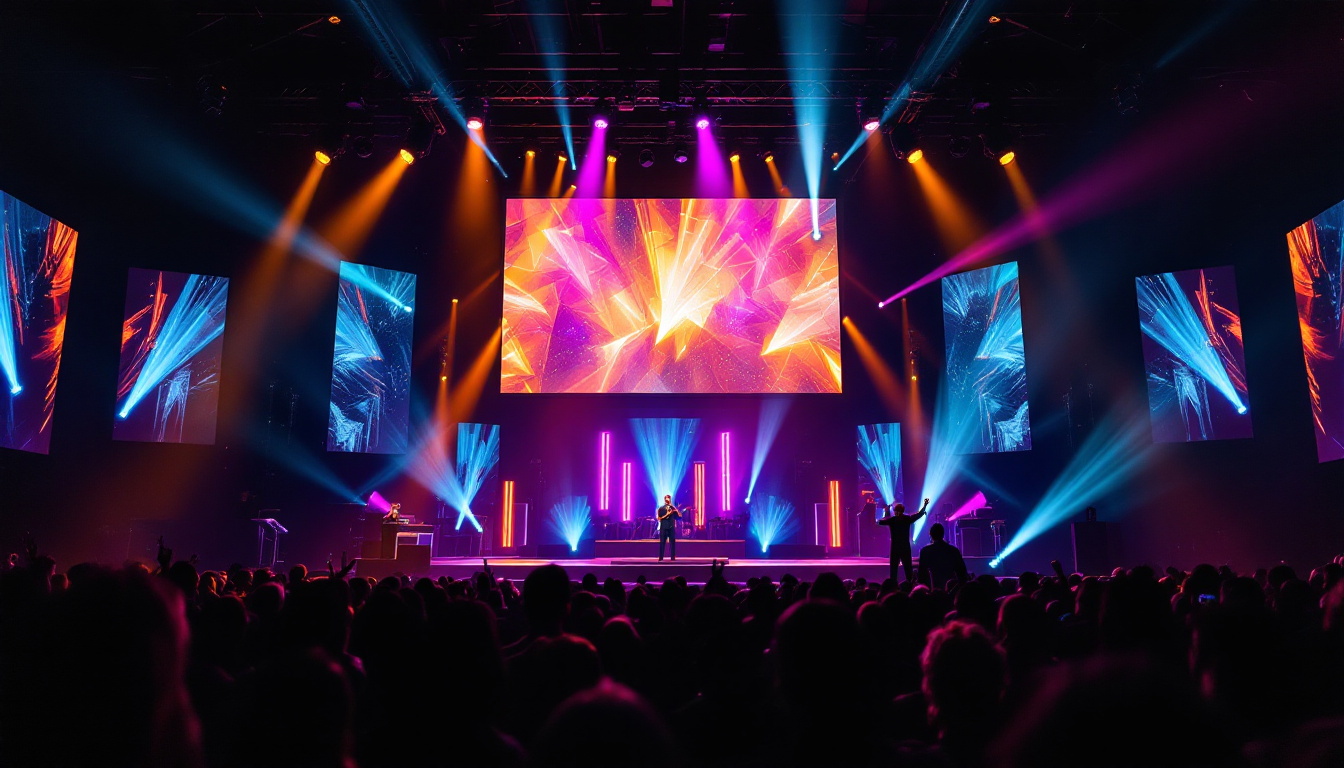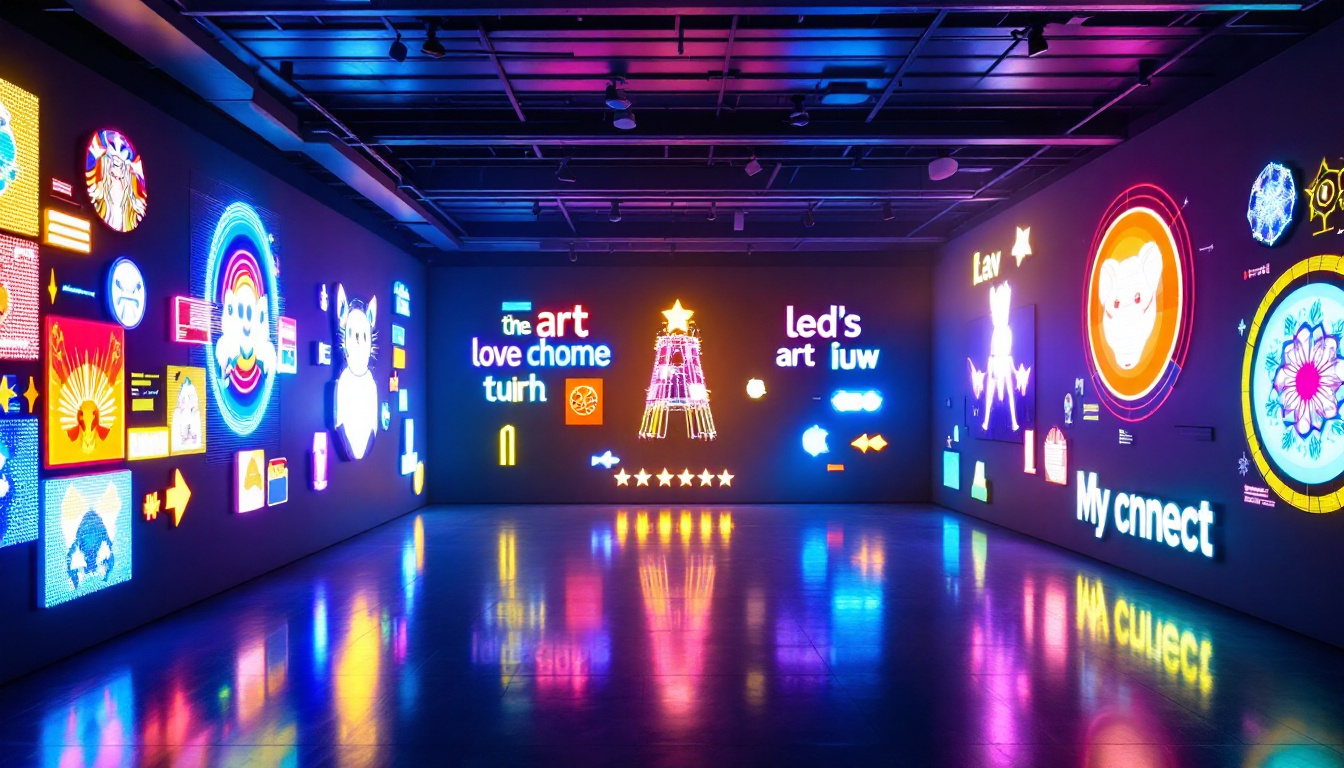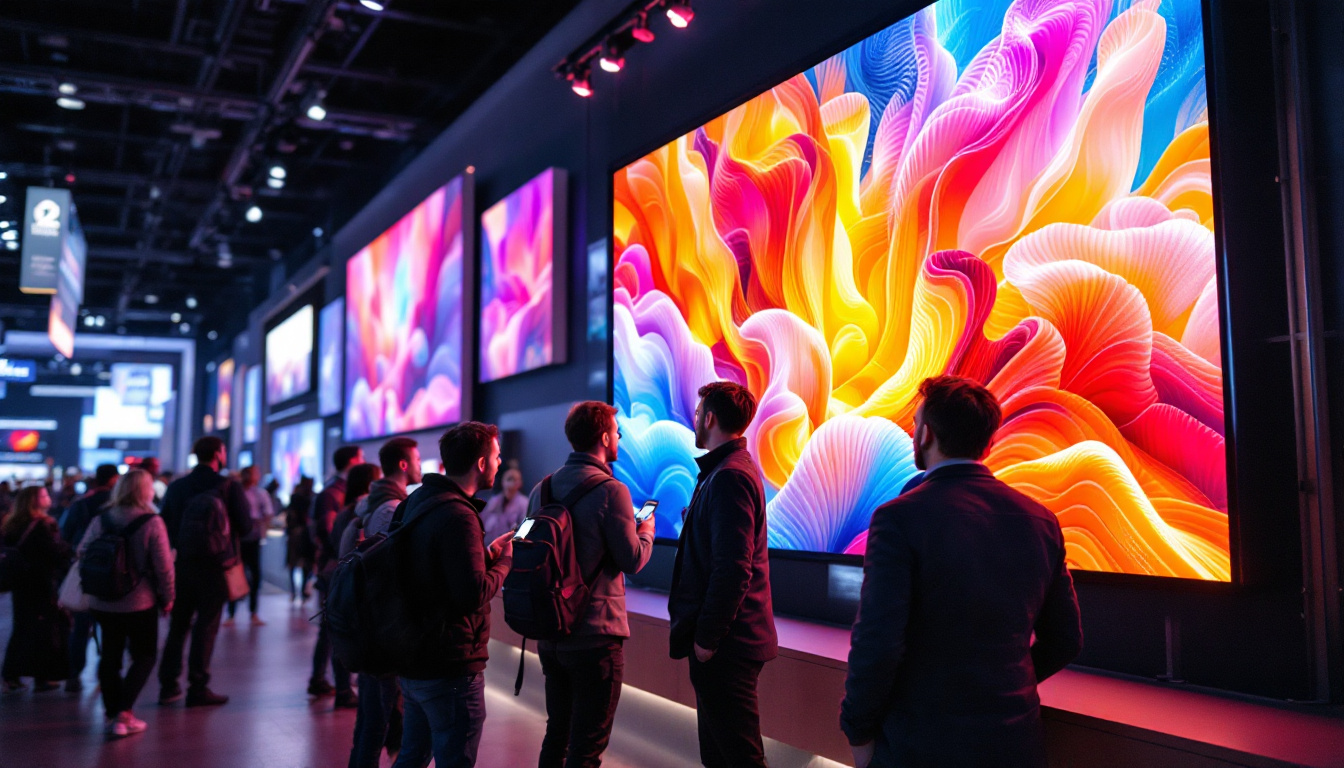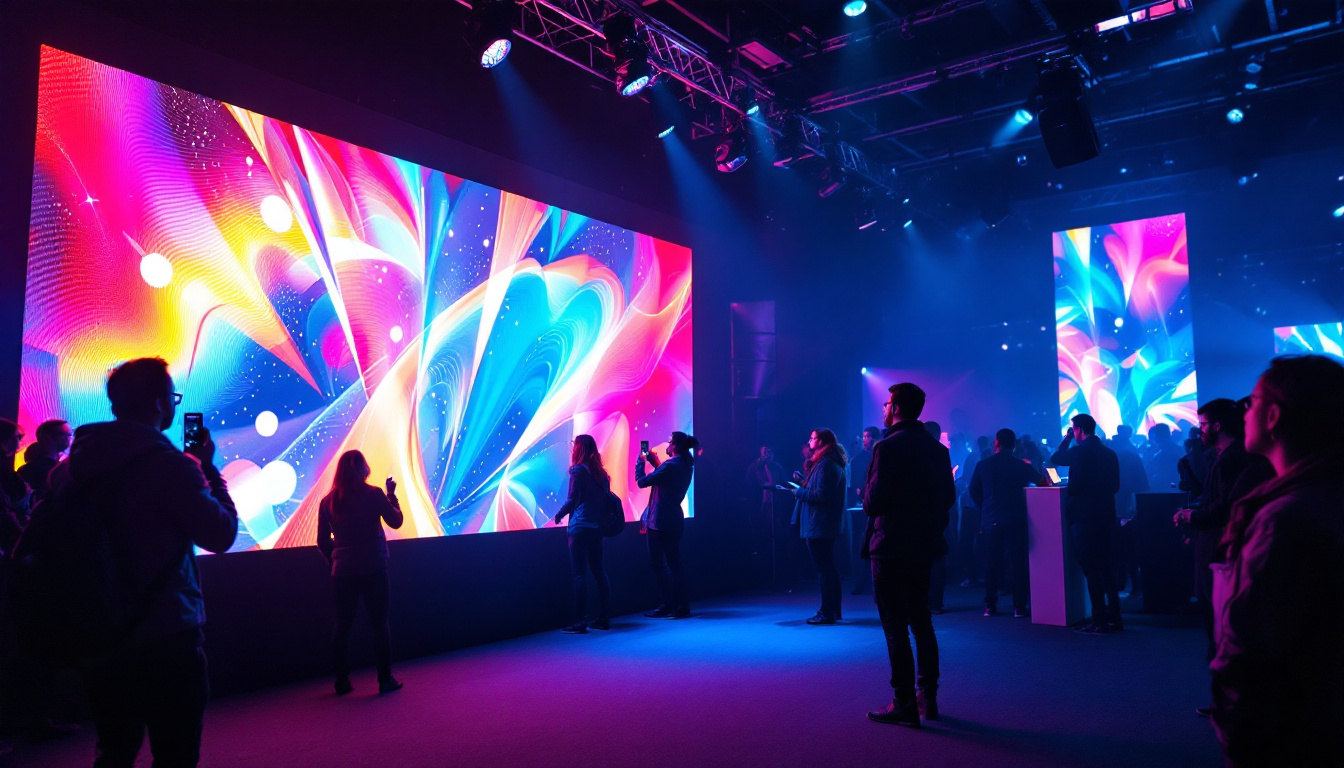In the modern era of worship, churches are increasingly adopting advanced technologies to enhance their services and create immersive experiences for congregants. One of the most significant innovations in this realm is the use of LED displays as stage backgrounds. These vibrant screens not only serve aesthetic purposes but also play a crucial role in communication and engagement during services. This article delves into the various aspects of LED displays in church settings, exploring their benefits, types, and best practices for implementation.
The Rise of LED Displays in Worship Spaces
As churches strive to create a more engaging environment, traditional static backdrops are being replaced by dynamic LED displays. This shift reflects a broader trend in society, where visual media has become an integral part of communication. The use of LED technology allows churches to convey messages, enhance worship experiences, and foster a sense of community through visual storytelling.
Why Choose LED Displays?
LED displays offer several advantages over traditional projection systems and static backgrounds. Firstly, they provide superior brightness and clarity, ensuring that visuals are visible even in well-lit environments. This is particularly important in larger spaces where lighting can be a challenge.
Additionally, LED screens are highly versatile. They can display a wide range of content, from worship lyrics and sermon notes to videos and live feeds. This flexibility allows for a more engaging experience, as congregants can easily follow along with the service and feel more connected to the message being delivered.
Enhancing Worship Through Visuals
The integration of LED displays into church services can significantly enhance the worship experience. By utilizing vibrant visuals, churches can create an atmosphere that resonates emotionally with congregants. For example, during a worship song, the display can showcase serene landscapes or relevant imagery that complements the lyrics, fostering a deeper connection to the worship.
Moreover, LED displays can be used to highlight important messages or themes within a service. Whether it’s displaying scripture verses, sermon points, or announcements, these screens provide a visual anchor that can reinforce the spoken word, making it more memorable for the audience.
Types of LED Displays for Churches
When considering LED displays for a church stage background, it’s essential to understand the different types available. Each type has its unique features and benefits, catering to various needs and budgets.
Indoor vs. Outdoor LED Displays
Indoor LED displays are designed for use within church buildings, providing high resolution and brightness suitable for close viewing. These displays are typically used in auditoriums, sanctuaries, and fellowship halls. They can be mounted on walls, hung from ceilings, or even set up as portable units for special events.
On the other hand, outdoor LED displays are built to withstand the elements, making them ideal for churches that host events outside or want to reach a broader audience. These displays are generally more robust and can handle varying weather conditions while maintaining visibility in direct sunlight.
Fixed vs. Modular LED Displays
Fixed LED displays are permanent installations that are often customized to fit specific spaces. They provide a seamless look and are ideal for churches that have a consistent setup for their services. However, the downside is that they may require significant investment and planning to install.
Modular LED displays, conversely, offer flexibility as they can be assembled and disassembled as needed. This type is particularly useful for churches that host various events or need to adapt their setup frequently. Modular systems can be configured in different shapes and sizes, allowing for creative staging options.
Best Practices for Implementing LED Displays
Integrating LED displays into a church setting requires careful planning and execution. To ensure a successful implementation, consider the following best practices.
Assessing Your Needs
Before investing in LED technology, it’s crucial to assess the specific needs of the church. Factors such as the size of the congregation, the type of services held, and the budget should all be taken into account. Understanding these requirements will help in selecting the right type of display and configuration.
Engaging with church leaders, volunteers, and members can provide valuable insights into what features would be most beneficial. For example, some congregations may prioritize high-resolution displays for detailed visuals, while others may focus on the ability to easily change content.
Choosing the Right Content
The effectiveness of an LED display is largely determined by the content that is presented. It’s essential to curate visuals that enhance the worship experience rather than distract from it. High-quality images, videos, and animations can significantly elevate the atmosphere, but they should always align with the message being conveyed.
Additionally, churches should consider incorporating interactive elements, such as live polls or social media feeds, to engage congregants further. This not only makes the service more dynamic but also encourages participation and connection among attendees.
Technical Considerations
Proper installation and maintenance of LED displays are critical for optimal performance. It’s advisable to work with professionals who specialize in AV technology to ensure that the display is set up correctly and integrated seamlessly with existing sound and lighting systems.
Regular maintenance checks are also essential to keep the displays functioning at their best. This includes cleaning the screens, checking connections, and updating software as needed. A well-maintained display will provide consistent performance and longevity, making it a worthwhile investment for the church.
Cost Considerations and Budgeting
Investing in LED displays can be a significant financial commitment, and churches must approach budgeting thoughtfully. Understanding the total cost of ownership is crucial, as it encompasses not only the initial purchase price but also installation, maintenance, and potential upgrades.
Initial Investment vs. Long-Term Value
While the upfront cost of LED displays may seem daunting, it’s important to consider their long-term value. High-quality LED screens can last for many years, often exceeding a decade with proper care. This durability can offset initial expenses over time, making them a cost-effective solution for enhancing worship environments.
Furthermore, the ability to create engaging visuals can lead to increased attendance and participation, ultimately contributing to the church’s growth and outreach efforts. This potential return on investment should be factored into any budgeting discussions.
Funding Options
Many churches explore various funding options to finance their LED display projects. This may include fundraising campaigns, grants, or partnerships with local businesses. Engaging the congregation in the fundraising process can foster a sense of ownership and investment in the project.
Additionally, some companies offer financing solutions specifically designed for churches, allowing them to pay for equipment over time rather than in a lump sum. This can make the transition to LED technology more manageable for congregations with limited budgets.
Case Studies: Successful Implementations
Examining successful implementations of LED displays in churches can provide valuable insights and inspiration for those considering similar projects. Here are a few examples of how LED technology has transformed worship spaces.
Community Engagement through Visual Storytelling
One church utilized an LED display to enhance its storytelling during services. By incorporating video testimonials from congregants, the church created a powerful narrative that resonated deeply with the audience. The visuals not only supported the message but also fostered a sense of community and connection among members.
This approach demonstrated how LED displays could be used not just for aesthetics but as a tool for deeper engagement and connection, encouraging congregants to share their stories and experiences.
Dynamic Worship Experiences
Another church implemented a modular LED display system that allowed for creative staging during worship services. The flexibility of the setup enabled the church to change the configuration based on the theme of the service, creating a visually stunning experience that kept congregants engaged.
By using visuals that aligned with the worship theme, the church was able to elevate the overall atmosphere, making each service feel unique and special. This dynamic approach to worship not only captivated the audience but also encouraged greater participation.
Future Trends in LED Technology for Churches
The landscape of LED technology is constantly evolving, and churches must stay informed about emerging trends to maximize their investments. Here are some anticipated developments that could shape the future of LED displays in worship settings.
Advancements in Resolution and Brightness
As technology continues to advance, LED displays are becoming increasingly sophisticated. Future models are expected to offer even higher resolutions and brightness levels, making them suitable for a wider range of environments. This will allow churches to create even more immersive experiences, regardless of lighting conditions.
Additionally, innovations in pixel pitch—the distance between pixels—will enable churches to achieve greater clarity and detail, enhancing the overall visual experience for congregants.
Integration with Augmented Reality
Augmented reality (AR) is poised to revolutionize how churches use LED displays. By integrating AR technology, churches can create interactive experiences that engage congregants in new and exciting ways. For instance, AR could allow attendees to view additional content on their mobile devices while interacting with the LED display, creating a multi-layered experience.
This integration could also facilitate virtual participation for those unable to attend in person, further broadening the reach of the church’s message and community.
Conclusion
Incorporating LED displays into church stage backgrounds presents a myriad of opportunities for enhancing worship experiences. From improving visibility and engagement to fostering community connections, these dynamic screens are transforming how churches communicate and connect with their congregations.
As technology continues to evolve, churches that embrace LED displays will be well-positioned to create compelling worship experiences that resonate with both current and future generations. By carefully considering their needs, budgeting wisely, and staying informed about emerging trends, churches can effectively harness the power of LED technology to enrich their mission and outreach.
Discover LumenMatrix LED Solutions for Your Church
Ready to elevate your worship experience with cutting-edge LED display technology? LumenMatrix specializes in innovative LED solutions that transform church stages into captivating visual platforms. From Indoor and Outdoor LED Wall Displays to Custom and All-in-One LED solutions, our products are designed to enhance engagement and inspire your congregation. Embrace the future of visual communication and check out LumenMatrix LED Display Solutions today to bring your church’s vision to life.































